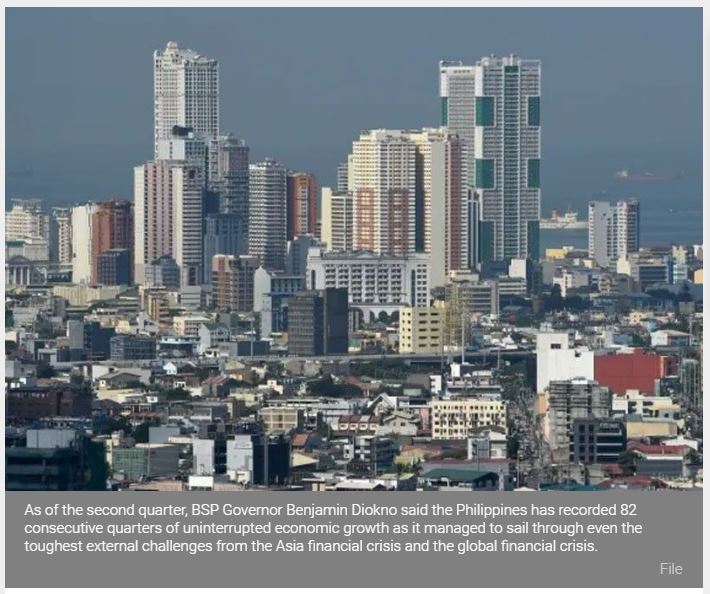Philippines: Economy seen to expand by 7% to 8%
Potential growth in next 3 years, says Diokno
MANILA, Philippines — The country’s economic growth potential is projected to rise even further in the next three years as the economy has been transformed into one of the most resilient economies in the region and the world by a long list of structural reforms, according to Bangko Sentral ng Pilipinas Governor Benjamin Diokno.
“At present, the Philippine economy’s potential growth is estimated at 6.5 percent, more than twice what it was in the early 1990s. The potential growth is projected to rise even further in the next three years, matching the government’s growth target of seven to eight percent by 2022,” Diokno said in his keynote address at the Philippines Investment Forum organized by Euromoney.
As of the second quarter, Diokno said the Philippines has recorded 82 consecutive quarters of uninterrupted economic growth as it managed to sail through even the toughest external challenges from the Asia financial crisis and the global financial crisis.
“The Philippines has come a long way from being Asia’s sick man. In fact, today the Philippines is recognized globally as among the fastest growing and most resilient economies in the world that enjoys even brighter prospects ahead,” Diokno said.
According to Diokno, the transformation did not happen overnight and was a product of a long list of structural reforms that started way back in the 1990s.
The BSP chief said vital reforms from 2016 onwards are expected to unleash more growth potentials for the Philippines.
He said among these positive game changers are tax reforms, the liberalization of rice importation, the national ID system, universal healthcare, universal access to tertiary education, the Ease of Doing Business Law, relaxation of the Foreign Investments Negative List (FINL), and the revised Corporation Code.
“At the moment, the Philippines is on the verge of becoming an upper middle-income economy. And with the continued reform momentum, we are paving the way to become a high-income status economy by 2040,” he said.
Diokno cited the incremental capital-output ratio has steadily declined to just 3.9 percent from 9.5 percent in 1992, while the economy’s total factor productivity has increased to two percent from only half a percent in the 1990s.
“These numbers mean that we are now able to produce more goods and services with the same amount of input – thanks to the long list of structural reforms we have implemented in the past,” he said.
Diokno said there is additional solid push for the economy’s productive capacity to expand further as the massive infrastructure spending under the Build Build Build program ushers in the golden age of infrastructure.
“The ability of the government to invest more for the country’s future is well supported by a healthy fiscal situation. The budget deficit and the public debt are both manageable,” the BSP chief said.
Diokno also cited the within-target inflation that is now within the BSP’s two percent to four percent target after being breached at 5.2 percent last year due to elevated oil and food prices as well as weak peso.
Diokno said the government is working hard to a achieve the much coveted A rating from debt watchers for cheaper borrowing costs and for more fiscal space to fund infrastructure projects and social services.
“We are keen on hitting the minimum rating within the A territory over the next two years or so,” he added.
Source: https://www.philstar.com/business/2019/09/25/1954654/economy-seen-expand-7-8#rJcghUvs0ztdWpLt.99


 Thailand
Thailand




